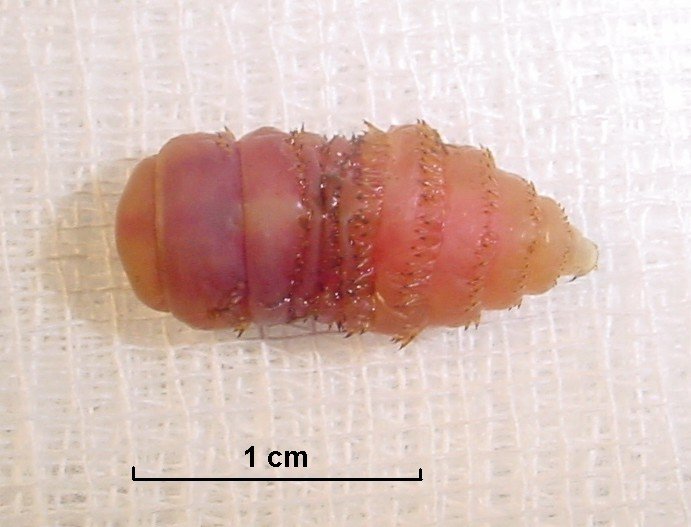STOCKHOLM, Sweden, May 5 (UPI) -- A botfly insect whose parasitic larvae grow in the bodies of mammals shot 30 microscopic hatched eggs into the eye of a woman, a Swedish researcher said.
The woman, Malin Hallgren, said the larvae attack hurt. But after doctors removed nearly 30 whitish maggots, she still complained of a persistent feeling of "creeping larvae" in her eye and nose area, entomology researcher Thomas Jaenson said in the Swedish medical journal Lakartidningen.
The doctors checked and, sure enough, they found two more maggots, Jaenson said.
The fly, which looks like a bumblebee, had been hovering close to Hallgren's face when it suddenly shot the larvae into her eye, Jaenson said.
The type of botfly that attacked her is known as an elk botfly because it shoots its larvae into the nostrils of elks and deer, where they then feed on the mucus, Jaenson said.
But the flies sometimes mistake human eyes for elk nostrils, he said.
The only botfly species known to prefer humans as the larvae host is the human botfly, or dermatobia hominis.
Those flies, usually found from Mexico to northern Argentina and Chile, pass on their eggs by capturing a mosquito, attaching their eggs to its body and then releasing the insect. The botfly eggs hatch when the mosquito bites a person -- the larvae use the mosquito bite area as the entry point -- or the eggs simply drop off when the insect lands on the skin, researcher Thomas Pape said in the April 2001 issue of Systematic Entomology.
The larvae grow beneath the surface of the skin.
Jaenson said elk larvae found in Sweden rarely, if ever, mature in human hosts, Swedish news agency Tidningarnas Telegrambyra reported.
But they do cause conjunctivitis in the eye, with symptoms such as a stinging or burning feeling, increased tear flow and an aversion to light.
If the larvae are not removed, they will attach themselves to the cornea and the eyelid, the news agency said. If a maggot penetrates into the eye, the damage could potentially be extensive.
Jaenson's advice to those who like walking in the woods is to immediately swat away any bumblebee-like insects that seem to hover in front of their face.
"Otherwise there is a risk of getting small larvae shot at one of your eyes," he wrote.















